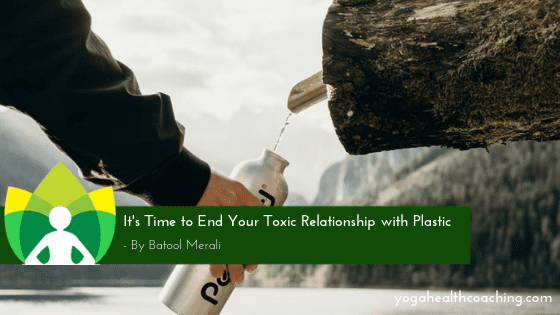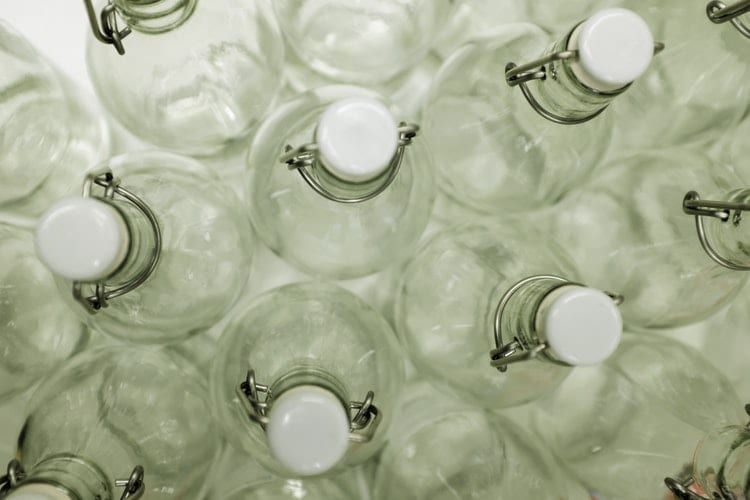
It’s Time to End Your Toxic Relationship with Plastic
Recently I was shopping for a gift for my niece. From milk bottles to sippy cups, toys to synthetic clothes, I was horrified to see how much plastic was hidden in products for infants. Plastic is hiding in everything.
Think about how much plastic we may be using every day. Look around and you will find you are surrounded by plastic. Your kitchen, your backyard, your office, the children’s park and kids toys- wherever you look, you will find plastic in one form or another. Because of its versatility, malleability, light weight, convenience to manufacture and cost effectiveness, plastics have made their way into every part of our lives.
Ever wondered why there is an upsurge in complicated diseases? Auto-immune problems, hormone imbalances and many other complications are on the rise despite recent medical advancements. There can be many reasons to diseases and disorders, but there is one clear and present danger. Plastic!
The Dangers of Plastic
Decades of using plastics have affected our health in a myriad of ways. According to a study published in the Environmental Health Perspectives, newborn infants have hundreds of chemicals in their blood. The contaminants include the plastic additive bisphenol A or BPA, which is known to mimic the hormone estrogen and cause developmental problems and precancerous growth in animals. Most plastic products release harmful chemicals that interfere with your hormones.
Why is plastic so dangerous?
Plastic is a man-made long chain polymer manufactured from petrochemicals or petrochemical by-products. The chemicals in plastics are known endocrine disruptors. They change hormone functions resulting in serious problems like infertility, obesity, and cancer.
We use many different types of plastics.
Based on the resins used for their manufacture, plastics are typically divided into seven types.
- PETE or PET – Polyethylene Terephthalate – Used for milk, water and soft drink bottles, food wrapping and packing, and kitchen storage containers.

- HDPE – High Density Polyethylene – Food and drink containers, detergent, shampoo, cleaners and bleach bottles, poly bags and garbage bags.
- PVC – Polyvinyl Chloride – Plumbing, flooring, electrical fittings and cables, interior décor, furniture, clothing, shoes and slipper soles, kitchen utensils and dinnerware, construction material, kids toys and games and many more.
- LDPE – Low Density Polyethylene – Mostly used in packaging of prepared food like frozen food, cheese, meats, bread etc.
- PP – Polypropylene – Packed foods, microwavable trays, upholstery and furnishing in the home, office as well as your car.
- PS – Polystyrene – Insulation material used in building construction as well as fast food packaging, disposable cups, plates and cutlery, egg trays etc.
- Others – All others which are not included in the above list. Like polycarbonate which is widely used in bottling, food packing, home furnishing, construction material, automobiles, computer hardware, electronics, consumer goods, aircraft and many other industries.
How Plastic Destroys Your Body
The toxic chemicals used in the manufacture of plastic cause major diseases and dysfunction. The toxins stay in the body as the liver does not know how to break down the chemical constituents. Over a period of time, the toxins start mimicking the hormones in the body which leads to complications. Some of the related health issues can include:
- Autism
- Autoimmune conditions
- Obesity
- ADHD
- Prostate & breast cancer
- Premature breast development in young girls
- Infertility
- Pregnancy complications
- Birth defects
Research confirms that many potential health problems can be solved by simply avoiding plastics.
Avoiding Plastic to Reduce Personal and Planetary Exposure
While all this information may seem daunting, there are ways to avoid and reduce plastic use. Taking small steps can help reduce our planet’s plastic load as well as our personal exposure to plastic pollutants.
If you are wondering where to start, here are some key small steps we can all adopt:
- Choose glassware and stainless steel for leftover food storage
- Use cookware made from stainless steel, cast iron, earthenware or stoneware
- Use cloth or reusable grocery bags
- Avoid packaged foods that have a plastic wrap, instead make your own cloth, plant leaves or beeswax coverings
- Shop local or organic farmers markets instead of buying pre-packaged fruits and vegetables from grocery stores
- Recycle and re-use
Plastic affects your health as well as the health of our planet. Buying plastic products means saying ”yes” to pollution and health sabotage. Let’s stop the self-destruction by stopping our habit of buying plastics.
Are you ready to break up with plastic?
What suggestions do you have to help reduce and live a plastic-free lifestyle?
Share below!
References
Yang, C., Yaniger, S., et al. Most Plastic Products Release Estrogenic Chemicals: A Potential Health Problem that Can be Solved. Environmental Health Perspectives. July 2011. 119(7), 989-996.



